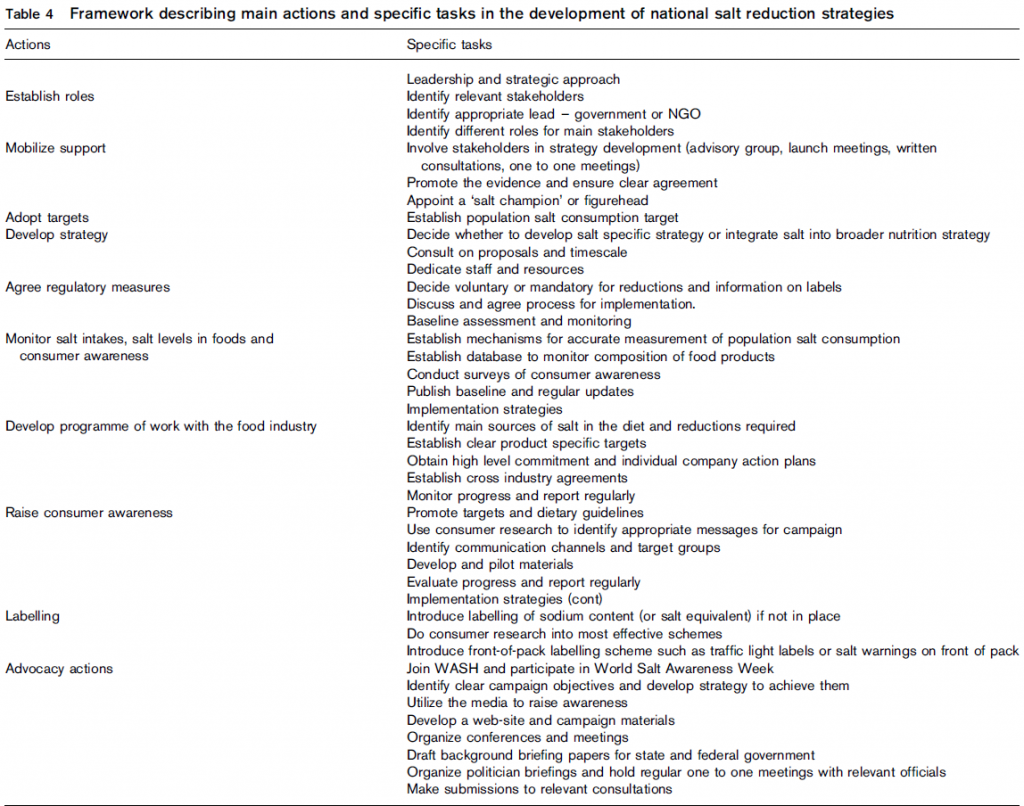Why it matters
Salt reduction strategies are much more likely to be effective and sustainable if time and effort is put into developing a strategic approach and ensuring stakeholder commitment. If you are clear about what you are trying to achieve and why you are much more likely to obtain a positive outcome. Establishing clear aims and objectives and clarifying the roles of different players is key.
How to do it
There are a range of different steps that need to be taken to establish a salt reduction strategy. These steps include:
- obtaining political commitment,
- establishing programme leadership and governance structures,
- setting clear goals and objectives, and
- developing strong supportive partnerships (including with iodine deficiency programmes).
Advocacy to obtain or maintain government support and make sure that relevant stakeholders have the right information is important. Resource 1 provides information on how to develop and advocacy strategy, including using the media.
Other steps to establish a salt reduction strategy are outlined in WHO EURO’s resource on Accelerating Salt Reduction Efforts in Europe (Resource 2). These include:
- Form a small leadership team
- Gather key stakeholders
- Secure a budget
- Set a national target for population salt intake
- Identify and agree on specific objectives of the initiative
- Develop an implementation plan and define specific initiatives
- Develop a monitoring and evaluation plan
Further information is detailed in Resource 3, outlining a proposed framework for establishing and monitoring salt reduction strategies (see Figure 1). We also include the WHO guideline on creating enabling environments for population-based salt reduction strategies (Resource 4).
More detail about how salt reduction interventions were developed in four countries (Argentina, Mongolia, South Africa and Vietnam) and lessons learned about the initiatives from the perspective of country program leaders of the salt reduction initiatives are available in Resources 5-8.
